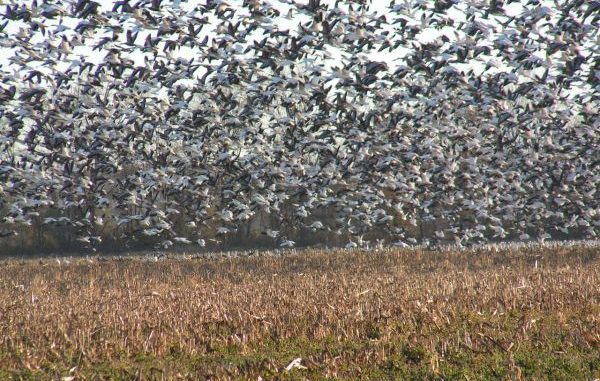
The first official Louisiana Department of Wildlife and Fisheries aerial survey for Northeast Louisiana back in November showed more than 160,000 geese in the Mer Rouge region the week duck season opened.
That was apparently just the scouting party. And it is an annual affair.
Those numbers have nearly tripled, and now big flights of geese cruise the area. They are frequently so thick in some fields that vehicle traffic stops just so people can watch them.
If something happens to scare one of the big fields of geese up and they all head out at once, it sounds like a jet airplane taking off.
It can be deafening. Seriously.
“We have an enormous number of geese up here because of all the corn and soybean fields that have been harvested,” Matthew Turner said. “Geese are attracted to them — wet or dry. Sometimes there are so many that you can hardly see daylight when they take off.
“We don’t do a lot of goose hunting, specifically, but there are so many that you usually get a few shots almost anytime you are duck hunting.”
Hunting geese isn’t as easy as just seeing them. In fact, they are just like ducks: They are wary of heavily hunted areas this time of year and, frankly, hunters are a little undermanned in some instances.
Consider a pair of hunters in a blind with 100 decoys against an open field a half mile away from 5,000 live “decoys” feeding and honking at each other.
You know who wins that one.
But you can set up in those areas that the geese are using, beating them to the spot for some pretty remarkable shooting.
And away from heavily hunted areas, they actually decoy well and respond to calling.
The East Zone season for Canada, white-fronted and light (snow, blue, Ross’s) geese ends on Jan. 25, but the special conservation order season for light geese reopens on Jan. 26 and goes all the way through March 1.
Check your hunting pamphlet for full regulations.
“The geese get shot at up high so much that they do get very wary of blinds, especially late in the season,” Laird said. “The best thing to do is find where the geese are feeding, and set up there with some decoys and lay-out blinds. These geese are very receptive to decoys and calling.
“Most of the areas that have geese are on leased or private property, but there are some areas where you can get landowner permission to hunt, especially late when it doesn’t interfere with duck hunting.”
One thing a lot of people don’t know is that the specklebelly goose has an excellent taste, Laird said.
“In fact, it is my favorite table fare, along with teal,” he said. “I like to slice up the breast, marinade it, and then season it with salt and pepper and lightly grill it.
“I know people who also take the time to smoke them whole for seven to eight hours, and they are excellent that way, too.”
In spite of the extended goose season, it isn’t as big a draw as many would think.
“By the end of duck season, we are getting fields ready to plant and pulling the water off as soon as we can,” Laird said. “Everybody’s tired, as well. Plus, when the weather starts warming, the geese get scattered and they are very, very unpredictable.
“That’s where they get the old expression ‘wild goose hunt.’”